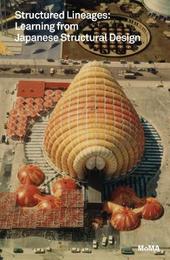
|
Structured Lineages: Learning from Japanese Structural Design
Paperback / softback
Main Details
| Title |
Structured Lineages: Learning from Japanese Structural Design
|
| Authors and Contributors |
Edited by Guy Nordenson
|
|
Text by Sigrid M. Adriaenssens
|
|
Text by Sean Anderson
|
|
Text by William F. Baker
|
|
Text by Seng Kuan
|
| Physical Properties |
| Format:Paperback / softback | | Pages:336 | | Dimensions(mm): Height 250,Width 160 |
|
| Category/Genre | Architectural structure and design |
|---|
| ISBN/Barcode |
9781633450561
|
| Classifications | Dewey:720.952 |
|---|
| Audience | |
|---|
| Illustrations |
400 Illustrations, unspecified
|
|
Publishing Details |
| Publisher |
Museum of Modern Art
|
| Imprint |
Museum of Modern Art
|
| Publication Date |
31 October 2019 |
| Publication Country |
United States
|
Description
A collection of essays on the tradition of architecture and structural engineering in post-World War II Japan Structured Lineages presents a selection of essays and roundtable discussions by internationally prominent structural engineers on the intertwined traditions of architecture and engineering in postwar Japan. Originally delivered as talks at a symposium held at The Museum of Modern Art in 2016, on the occasion of the exhibition A Japanese Constellation: Toyo Ito, SANAA, and Beyond , the ten essays gathered in this volume offer insight into the collaborations between architects and structural engineers that engendered many of the most important buildings erected in Japan after 1945, with special focus on the work of Tange Kenzo, Kawaguchi Mamoru, Kimura Toshihiko, Matsui Gengo, Saitoh Masao, Sasaki Mutsuro and Tsuboi Yoshikatsu. Charting a largely unexplored history in a manner at once scholarly and accessible, these conversations and illustrated essays show how intimately the innovations of this collaborative tradition passed from one generation to the next. Some of Japan's most recognizable, globally influential designs are traced to their origins in a mentor's earlier experiments. The diverse backgrounds of the scholars and engineers inform the book's uniquely international perspective on the spirit of creativity and cooperation that arose in Japan in the latter half of the 20th century and persists to this day.
|